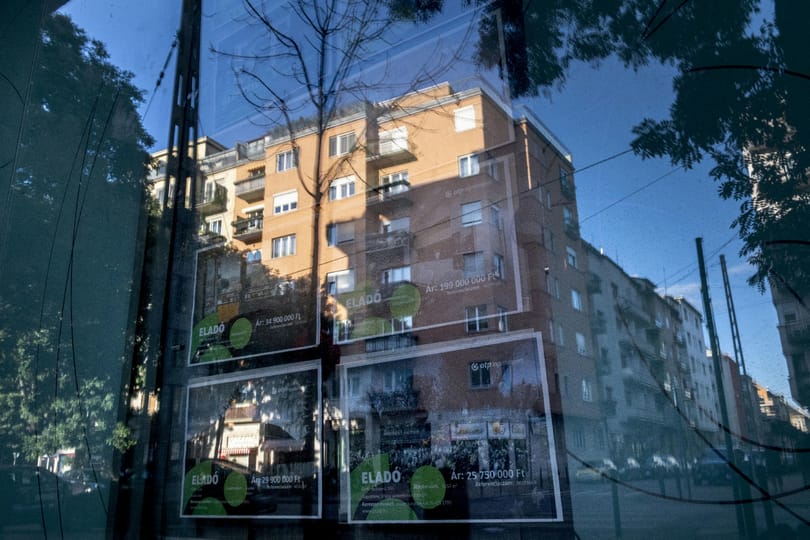Viktor Orbán's new announcement, made in a Facebook post on Wednesday afternoon, exploded like a bombshell: the prime minister announced from the government meeting that those buying their first apartment or house can receive a home loan at an interest rate of 3 percent.
The loan in question has an interest rate of 3 percent, the maximum loan amount is 50 million forints, and the term is up to 25 years. The loan can be applied for with a 10 percent down payment.
The property can be located anywhere, so not only people living in villages or preferred small settlements can receive the preferential loan.
The word"anyone" is also included in the announcement, which suggests that you probably don't have to have children to take advantage of the discount. (Those who do have children are already eligible for the Csok Plus or Baby Waiting Loan.) Also, contrary to previous expectations, the loan in question will not only be available to young people.
What you can know now:
- The interest rate on the loan is fixed at 3 percent until the end of the term.
- The maximum loan amount is 50 million forints.
- The loan term can be up to 25 years.
- The loan can be used with a 10% down payment.
- The loan can be used by first-time property buyers.
- The preferential loan will be available in any settlement, there is no age limit for the applicant.
How much can an applicant earn with this subsidized loan?
Currently, the average interest rate on regular market loans is around 6.5 percent. For a loan amount of 20 million forints and a term of 20 years, this interest rate results in a repayment installment of 149 115 forints. The total amount to be repaid on the loan is 35 787 511 forints.
At an interest rate of 3 percent, the monthly installment of the loan in question would be 110 920 HUF, and the total amount to be repaid would be 26 620 685 HUF.
On a monthly basis, with the introduction of the new option, the monthly payment for the loan in question will be 38,195 HUF less, resulting in a total savings of 9,166,826 HUF.
What impact could this move have on the real estate market?
Basically, a lower loan interest rate also means that interested parties could borrow a larger amount without their repayments increasing. Bankmonitor experts demonstrate this through the previous example.
The installment of a 20 million forint home loan with a 20-year term and an interest rate of 6.5 percent is 149,115 forints. What about those planning to buy a home who could afford such a large installment and would buy their first home? For them, the loan interest rate would be 3 percent, and with such an interest rate, the previously calculated 149,000 monthly installment would cover the repayment of a 26.8 million forint home loan.
This means that interested parties can borrow 6.8 million forints, or about 34.43 percent more. If the interested party originally wanted to finance half of the purchase price with a loan, the purchase price was 40 million forints, which required an additional 20 million forints of own funds.

After the launch of the new subsidized loan, the buyer could potentially pay off 46.8 million forints without being in a worse position. This could induce a serious price increase.
Of course, it is not at all certain that purchase prices will increase to this extent, this largely depends on the actual conditions under which the new subsidized loan will be available. Whether there will be any additional personal or real estate restrictions.
What don't we know yet about the new subsidized loan?
However, we don't know much about the detailed conditions yet. Based on previous discounts, there could be an expectation regarding the length of the social security relationship, a clean criminal record, and freedom from public debt (generally, a public debt of less than 5 thousand forints is acceptable).
Real estate-related conditions may also arise, including requirements regarding purchase price, square meter price, energy efficiency, and modernity.
These as yet unknown conditions may greatly influence the range of eligible beneficiaries and the impact of the preferential loan on the real estate market.
It should be emphasized that, based on the information provided, the new subsidized loan does not require a child. This means that the interest rate and maximum loan amount known from the Csok Plus program can be achieved without such a commitment. This puts the value of the previous housing subsidies in parentheses.
Of course, it is also a very important question how the new option can be combined with existing subsidies – the Csok Plus, the Valusi Csok, the Babaváró loan – this also has a decisive influence on who will choose which discount or discounts.
In addition, we should not ignore those who will not be eligible for the new subsidy – they are not planning to buy their first home – as they can expect housing prices to rise without receiving extra money or cheap resources on the other side.

